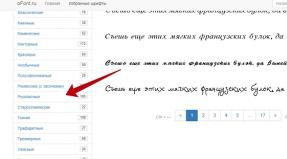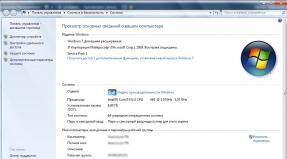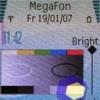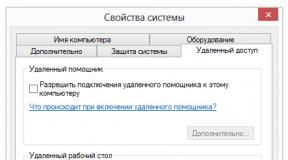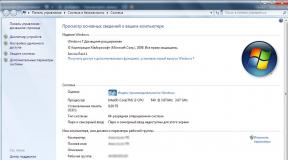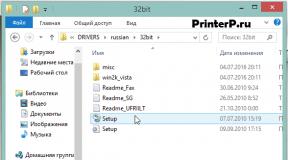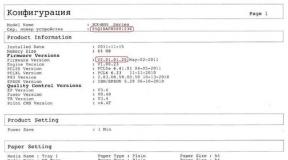Huawei honor 8 lite 32mb review.
The release of a new phone always makes buyers wait for either a more powerful or weaker version. This happened with Honor 8. After the device entered the market, an enhanced version with the Pro prefix appeared, and then it was decided to also release a budget version, which without thinking twice was supplemented with the Lite prefix. Despite the fact that the word “light” usually makes buyers think that they saved money somewhere, a review of Honor 8 Lite will show that in this case the savings happened on the body, but not on the hardware.
The cost of the smartphone at the time of release was 16 thousand rubles. For this money, buyers could get a not-so-weak processor with 8 cores, 4 gigabytes of RAM, a good 3000 mAh battery, and an FHD display. Full specifications of Honor 8 lite:
Huawei Honor 8 lite supports the use of two SIM cards, one of them can be replaced with a memory card. Considering that the device is sold only with 32 GB memory, there is a need to add a card; the second option is use of cloud storage. The Honor 8 lite package is completely standard: phone, cable and power supply, warranty card, instructions, key for the tray.
Huawei Honor 8 lite
Design
At first glance, the Honor 8 Lite is very similar to its older brother. There are the same rounded edges, bright colors, and a complete repetition of the body design. The main difference between Honor 8 and 8 lite that can be seen is the absence of a second camera. If you take the younger smartphone in your hands, then everything becomes clear. First of all it is felt difference between assembly materials. The older version is glass and metal; in the younger version, metal was replaced with plastic. Moreover, the glass on both the back and front also looks and feels like plastic.

After you start using it, one very big disadvantage immediately becomes visible - no oleophobic coating, the phone is instantly covered with fingerprints, which are very difficult to erase. The second point is that the hand with the phone immediately sweats and it becomes slippery. Many Honor 8 lite reviews point to this point.

If we ignore the materials used to create the device, the build quality leaves a pleasant impression. Frame does not creak, has no backlash. The dimensions of the device are quite small, so it fits well in the hand. From the point of view of ergonomics and the use of control elements, there are no questions.

Color options for Huawei Honor 8 Lite – blue, gold, white.
On a note! A black smartphone was also released, but in a very limited edition, so it is often not indicated in the technical specifications, and it is difficult to find.
Display and battery
The Honor 8 Lite smartphone has a 5.2-inch display. According to technical parameters, this is quite typical IPS matrix with good viewing angles and not the best white balance. Color rendition is very dependent on lighting, and in bright light all colors quickly fade. Despite the anti-reflective coating, using the device on a sunny day is not very convenient; you will need to set the brightness to the maximum value.

The resolution on the model is FHD, pixel density 423 per inch, this is a very good indicator. Watching a movie on your phone is quite possible.
Important! To reduce eye fatigue, the device has a special mode that reduces ultraviolet radiation.
The Honor 8 lite phone has a good battery with a capacity of 3000 mAh. As experience from real use shows, under medium loads and constant use of Wi-Fi, the device can last about 24 hours. When switching to LTE, the figure will decrease. The manufacturer's description states that the phone is capable of displaying the following numbers:
- 9 hours with maximum screen brightness watching videos;
- 4.5 hours of gaming with maximum display brightness;
- 5 hours 40 minutes – Internet use at the above screen settings.
An interesting feature of the Honor 8 Lite is the Wi-Fi+ function: its essence is that if there are several available wireless networks, the device will choose the most stable one to connect to. At the same time, it may not necessarily be Wi-Fi; if LTE is more stable, then the choice will be made on it.
The Honor 8 Lite, unlike the older version, has only one 12 megapixel camera. Despite this, the pictures come out very good day and evening, and at night just not bad. The same Chinese brand Xiaomi at a similar price will not be able to offer a phone that can take good pictures at night. There are no artifacts or unnecessary noise here, and the white balance is quite accurate.



The front camera also deserves positive emotions. Selfies turn out very beautiful, and the module also has wide angle format. In this case, filming a large company with an auxiliary camera is quite possible even without a monopod.
Important! The disadvantage of the camera can be called video. The main one is capable of recording FHD, but the clarity is not the best, and the viewing angle is small. The front camera only does HD.

Processor capabilities
Despite the fact that Honor 8 lite has its own HiSilicon Kirin 655 processor and a fairly budget price, it copes well with heavy tasks, namely Easily allows you to play a variety of games. A nice thing is that the phone does not heat up.
The processor has 8 cores that work in quads and are used intelligently. Core frequency – 1.7 or 2.12 gigahertz. The Honor 8 Lite's parameters indicate that its memory is only 32 gigabytes, but microSD support is up to 128 gigabytes. There are 4 gigabytes of RAM, which is quite good for a phone worth 16 thousand rubles.

Conclusion
The capabilities of the Honor 8 Lite are quite serious for its price - this is a device that has a good battery, a powerful processor and a decent camera. The phone performs standard functions that are found in any budget device, but at the same time it does some of them better. In the description above, it was stated that many devices from Xiaomi cannot cope with shooting at night, and smartphones from Meizu, even in a higher price segment, sometimes do not allow you to enjoy the gameplay. Many reviews indicate that the Honor 8 lite is an excellent option for purchase in its price segment.
The only real disadvantage that may make some buyers change their mind about buying this phone is body materials. This is where the manufacturer made a mistake, and even if plastic in itself is not a terrible sin, the fact of the absence of an oleophobic coating, which seems to be already everywhere, really causes unpleasant emotions. However, this problem can be solved by adding a protective glass sticker and a case, but if the device does not take photos well or cannot launch the game, then nothing can be fixed.
Huawei Honor 8 lite
Smartphones under 20 thousand rubles are now more relevant than others. And all because people don’t have much money, but they would like to use something modern and technological. Honor 8 Lite- one of such devices. A functional, fast, affordable smartphone, but it has one problem. IN review I'll tell you which one it is.
Equipment
The Honor devices given to journalists for testing do not spoil them with complete packages. Therefore, I’ll just list what you can find in the box when unpacking the Honor 8 Lite:
- telephone
- Charger
- USB cable
- quick user guide
- warranty card
- SIM card removal tool

There is no wired headset included, so we select something of our own. I don’t get tired and won’t stop getting tired of recommending headphones from Xiaomi - here. They cost 16 bucks and are a lot of fun.
Design
The continuity of the Honor line is visible to the naked eye. The device is very similar to its grandfather, and to its contemporary.


The appearance is calm, without frills, but also without failures. You just take a smartphone out of the box, set it up and use it. You don’t get any particular euphoria, but there’s nothing to dig into either. This is how our hero came out.
Traditionally, there are no touch buttons under the screen. They are part of the interface, when necessary (though not always) they hide and stop eating away the useful area of the screen.

There is an advantage to this approach - it’s convenient to watch videos and play on a smartphone. You calmly hold the device with your hands in a horizontal position and there is no risk of accidentally touching the touch button at the most inopportune moment.
They say there is glass on the front and back. What exactly - history is silent. Both panels have a 2.5D effect, so the design is streamlined, pleasant, and fits very well in the hand.
| Length | Width | Thickness | Weight | |
| Honor 8 Lite (5.2’’) | 147,2 | 72,9 | ||
| Honor 8 (5.2’’) | 145,5 | |||
| Honor 6X (5.5’’) | 150,9 | 76,2 | ||
| Xiaomi Redmi 4 Pro (5.2’’) | 141,3 | 69,6 |

The base of the body is plastic. It is quite simple, it goes along the frame of the device. It seems to be plastic, ugh, but it still doesn’t cause any rejection. Don't be upset about this.
Is the glass surface scratchable? And how. Therefore, the use of a case or double-sided film is welcome.

But now I’m going to scold the smartphone and I think it’s absolutely justified.
The protective glass of the Honor 8 Lite screen does not have an oleophobic coating!
It’s hard for me to imagine how in 2017 a smartphone, even a relatively inexpensive one, could not have such must-have functionality. But what is not there is not there, so the screen very readily collects fingerprints, dust and other nonsense.
Hence the conclusion - it is necessary to glue the protective glass (film). Firstly, it will save the display from scratches. Secondly, you have nothing to lose. Fortunately, there are now glasses with that very “oleophobic” coating.

The fingerprint scanner is located on the back - this is not the best place for it, but Huawei / Honor do not practice otherwise. However, the index finger always fits clearly on the contact pad, and the scanner itself works very sensitively and quickly. 10 out of 10 attempts are successful, and the unlocking speed is really pleasing. Even mine looks slow-witted compared to him.
At the bottom end we have Micro USB (not a tragedy at all!) and symmetrical perforation for a microphone (on the left) and a speaker (on the right). The speaker is average in quality and volume. At maximum volume there is no wheezing or other crime. Hooray!

Display
On this point, it’s both worth worrying and not. I'll explain now.
The LTPS panel itself is excellent. Yes, we have an IPS screen, so a slight fog appears at extreme angles. However, if you regularly look at your smartphones from this angle, be sure to write to me in what situations. Really interesting!

I compared the screen of our hero with the display (pictured below or on the right). The last one is actually our flagship and should outshine some upstart at half the price.






In fact, it turned out that the Honor 8 Lite display has a larger brightness reserve, and at the maximum deviation, the inversion does not turn the colors into green.


We continue to praise the display. A resolution of 1920 x 1080 (and no more is needed), coupled with a 5.2-inch diagonal, gives us excellent picture smoothness. 423 ppi is an excellent indicator for all tasks, except perhaps VR. On the other hand, QHD screens have not yet gotten rid of grain, and it is for this reason that I consider the current incarnation of virtual reality technology to be nothing more than self-indulgence. Expensive pampering.
Now it's time to scold the screen.
Due to the lack of an oleophobic coating, a ton of fingerprints accumulate on the glass, so it is very difficult to see anything on the display in the sun.
You need to constantly rub the screen with a cloth or just on your thigh. Constantly!

The only thing that will help out is the same protective glass with an “oleophobic” coating. Sold separately, if necessary.
Specifications Honor 8 Lite (model PRA-TL10)
- HiSilicon Kirin 655 processor (8 Cortex A53 cores, 4 of which operate at 2.1 GHz, 4 others - 1.7 GHz, 64-bit, 16 nm)
- Mali-T830 MP2 graphics up to 900 MHz
- RAM 4 GB LPDDR3 (after reboot free 2,666 MB)
- 32 GB data storage (20.16 GB actually available after removing advertising utilities)
- support for Micro SD memory cards up to 128 GB (combined slot with SIM cards)
- LTPS display with a diagonal of 5.2 inches and a resolution of 1920 x 1080 pixels (density 423 ppi)
- 8 MP front camera (f/2.0, 77-degree lens, Full HD video recording)
- main camera 12 MP (f/2.2, phase detection autofocus, pixel size 1.25 microns, video recording 1080p video)
- battery 3,000 mAh
- OS Android 7.0
- EMUI 5.0 shell
- Sensors: accelerometer, light and distance sensor, gyroscope, digital compass, fingerprint scanner
- Connectors: Micro USB (OTG works), 3.5 mm audio output
- Dimensions: 147.2 x 72.94 x 7.6 mm
- weight 147 g
Wireless capabilities:
- 2G, 3G, 4G (LTE Cat.6 bands: 1, 3, 7, 8, 19, 20, 28, 38, 39, 40)
- support for two Nano SIM cards (one radio module)
- Wi-Fi (802.11 b/g/n, 2.4 GHz), Bluetooth 4.1, FM radio
- Navigation: GPS, Glonass, Beidou

A few words about the Kirin 655 processor. This 8-core “stone” was introduced in January 2016. He is almost a year and a half old, but he feels quite confident. In fact, it is an excellent competitor to the extremely popular Qualcomm Snapdragon 625, simply developed in-house by Huawei.
The chipset will definitely be relevant throughout this year. I will not undertake to judge what will happen next.
There is enough performance in games. So, World of Tanks Blitz can be safely played on medium graphics settings. The frame rate will be between 24 - 35 FPS.
4K video won't scare our hero. Everything plays without problems.

Regarding the interface and smooth operation, I can say the following. There are no lags or brakes at all. However, it feels like the smartphone is not reactive. It works quite vigorously, but it’s clear that this is clearly not a flagship. On the other hand, after unlocking the first 10 seconds, he also cannot come to his senses. And this is a smartphone on a completely different level. So think about it...
Synthetics clearly show that our hero is not so far removed from many of the top devices of last year. This is good.



In terms of hardware, the only frustrating thing is the lack of NFC. In 2017, you buy a phone and remain left out of contactless smartphone payments. Android Pay has come to Russia, it feels great, many people use it, but you don’t.
Yes, you can wait another year, but I would like to use this feature now. Okay, not fatal. Go ahead.
Cameras
An 8 MP sensor is used as the front camera. For some reason, Honor does not disclose lens aperture data, although the indicators are quite standard. The front camera has an aperture of f/2.0, and the main camera has f/2.2. The optics, of course, are dark, but when shooting macro objects the blur is still not bad.

I liked the quality of pictures taken with the front sensor. Good detail and white balance. Less contrast would have been really good. On the other hand, excessive contrast can be easily removed in the camera settings, so we won’t write this down as a minus.

The main camera is 12 megapixels. Phase detection autofocus is used, the pixel size is 1.25 microns - nothing outstanding, but nothing bad to say either.
The quality of the pictures is average, there are not enough stars in the sky. Photos look good on a smartphone screen, but not so great on a computer.
As for me, two things are missing: detail and more sophisticated algorithms. White balance almost always suffers: some areas turn out dark, others overexposed.
The HDR mode brings the picture to the level that should be present on the machine. But somehow I can’t even think of naming shots with real extended dynamic range.

HDR didn't work well

HDR worked well
As soon as there is no longer enough lighting, the automation suppresses the noise and turns the photograph into a watercolor painting. If you don't enlarge the image, everything is fine, but if you zoom in, we immediately see the lack of detail. This is the peculiarity.
For the originals of all examples, please click here.
The device can record video in Full HD at 30 frames per second. The videos turn out normal, nothing more.
Software shell
The device runs on Android 7.0, but it is tightly closed with its own EMUI 5.0 shell. And this is never a bad thing.
Yes, some citizens have questions about the design of icons, interface elements and suspicious similarities with Apple’s iOS.



Otherwise, the shell is perfectly optimized and very functional.
For example, in the file manager there is a “Personal” folder, which can be additionally protected with a password and fingerprint. The files in it are encrypted and your wife or villain will definitely not be able to gain access there. Useful thing!


In addition, the system constantly monitors and issues recommendations like “Are you aware that this application is consuming processor energy disproportionately? Maybe we can close it?” The tips are really useful and really work. This is why I have loved the shell from Huawei for a very long time.
In general, having your own launcher is one of the main advantages of any Huawei and Honor.
You always know that you are getting a device that works stably and is perfectly optimized in terms of software. Here's an analogy. The MIUI shell from Xiaomi is also very good, but for the first 2-3 months after the release you are guaranteed to experience a wide variety of glitches. Then, with updates, the situation improves, but this takes some time. With EMUI, this happens extremely rarely, and only before the official start of sales, when only journalists have time to use the gadgets.
If only there was less software garbage that was pre-installed initially, it would be very good. Fortunately, most advertising and affiliate applications can be removed.


Sound quality
You don't have to worry about this either. The sound in the headphones is good, at the level of any modern smartphone. Yes, if you need something special, then this is not for Honor, but I repeat, the sound is still very decent.


Of the improvements, there is only one setting - a certain SWS. It increases the volume and adds bass. In other words, it may not be used.
In this case, the screen glow time will be about 3 hours. Notifications and all wireless interfaces, including GPS, are activated. If you use the device more intensively (5-6 hours of screen operation), the smartphone will easily last 1 full working day. In my opinion, an excellent indicator!
Bottom line
When they ask me what phone to buy under 20 thousand rubles To ensure that you go and buy it, I often recommend either Huawei / Honor or Asus. It is unlikely that you will be able to find something better in this price range. Yes, there is also China with all the Xiaomi, Meizu and other brands, but there are many risks for the common man, so we return to the same brands again.

In general, my favorite is . For 17 thousand rubles, it is simply impossible to find something more interesting in terms of characteristics in official retail. Has my opinion changed after testing Honor 8 Lite? No, because our today's hero looks weaker compared to the 6X. The latter has two excellent cameras, NFC and no problems with the oleophobic coating. Plus, the body is made of metal. The 8 Lite cannot boast of anything like that.
Let me remind you that the current Honor 8 Lite price— 15,990 rubles. Only a thousand less than the 6X. The G8 has only one advantage - a more compact body. Still, there are a lot of users for whom the iPhone 6 looks like a rather large animal.
If Honor 8 Lite would cost around 13 thousand rubles - yes, we could safely recommend it for purchase. But all the raspberries for our hero are spoiled by a competitor from his native product line. What can you do?
A balanced mid-level model with a very attractive appearance
Almost a year has passed since Huawei presented its attractive Honor 8 smartphone to the whole world in Paris, which many users liked not only for its good characteristics, but also for its unusual blue body color, which instantly became a hit. Before this, this color was practically not used by manufacturers of mobile equipment - except occasionally.
Huawei quickly elevated this color to the rank of the main ones and now constantly uses it as its own original “feature” that others do not have. However, a whole year passed until, finally, in the spring of this year, followers of that legendary model began to appear in Russia. They became related smartphones Honor 8 Pro And Honor 8 Lite, also, naturally, offering a signature blue color. The advertising focuses specifically on the blue version, although these models are also available in other, also quite attractive, colors. The youngest model in the growing family, Honor 8 Lite, arrived for testing in the popular blue color.

Main characteristics of Honor 8 Lite (Model PRA-TL10)
- SoC HiSilicon Kirin 655, 8 cores Cortex-A53 ([email protected] GHz + [email protected] GHz)
- GPU Mali-T830 MP2
- Operating system Android 7.0, EMUI 5.0
- Touch display IPS 5.2″, 1920×1080, 423 ppi
- Random access memory (RAM) 3/4 GB, internal memory 32/64 GB
- Nano-SIM support (2 pcs.)
- MicroSD support up to 128 GB
- GSM/GPRS/EDGE networks (850/900/1800/1900 MHz)
- WCDMA/HSPA+ networks (850/900/1900/2100 MHz)
- Networks LTE Cat.6 FDD (B1/3/7), TD (B38-41)
- Wi-Fi 802.11b/g/n (2.4 GHz)
- Bluetooth 4.1
- GPS, A-GPS, Glonass
- Micro-USB, USB OTG
- Main camera 12 MP, f/2.2, autofocus, 1080p video
- Front camera 8 MP, f/2.0, fixed. focus
- Proximity sensor, lighting sensor, magnetic field sensor, fingerprint sensor, accelerometer, gyroscope, step detector
- Battery 3000 mAh
- Dimensions 147×73×7.6 mm
- Weight 147 g
Appearance and ease of use
Honor 8 Lite is a thin and sleek smartphone with a body made of two flat glass panels with a convex metal frame between them. From the outside, the device looks impressive, sparkling in the sun thanks to its panels with a “brushed steel” effect. This is glass with a metallized shiny backing, that is, almost a mirror, only slightly darkened.

Naturally, all fingerprints and any dirt will be visible on such surfaces, although, in fairness, it should be noted that a high-quality oleophobic coating does not allow fingerprints to appear quickly, and they are easily erased. The corner parts of the case are noticeably rounded in plan, the profile is very thin, which is why the device fits comfortably in any pocket.

The glass panels themselves can be quite slippery, but the smartphone is usually held by the sides, and here they have high-quality matte surfaces that do not slip at all in the hands. This issue is well thought out in Honor 8 Lite. There is also not the slightest complaint about the assembly, the body is monolithic, all the parts are clearly fitted, Huawei is in complete order with this.
 |
 |
The Honor 8 Lite version differs from the older Honor 8 and Honor 8 Pro by the absence of some elements. Here, for example, there is no dual camera, no two-section flash, no infrared transmitter on the top end. But for some reason, two rows of holes are cut in the bottom end, although there is only one speaker.

The top end contains only a 3.5 mm audio output for headphones and an additional microphone for the noise reduction system.

The cards are inserted into the side hybrid slot: either two Nano-SIMs, or one Nano-SIM plus one microSD memory card - everything is standard. Hot swapping of cards is supported.

Mechanical buttons are installed on the opposite, right side edge. The keys are large, protrude noticeably, are easy to feel, the action is a bit harsh, but the response is clear.

The entire front panel is covered with 2.5D glass with sloping edges. Above the screen are the usual sensors, a front camera peephole without its own flash, and an LED event indicator.

There are no hardware touch buttons under the screen; the buttons are only on the screen; their relative position in the navigation panel in Huawei smartphones can traditionally be changed at your discretion.

A camera module with a single flash is installed on the back side of the case; the same common glass back panel is used as protective glass, that is, the camera does not protrude beyond the surface. But the fingerprint scanner platform located just below is slightly recessed, making it easy to feel blindly.

Using a fingerprint sensor, you can not only unlock the screen, but also control calls, menu scrolling, alarm clock and camera shooting. There are no complaints about the scanner’s performance, recognition is quick and accurate, your finger can be placed at any angle, and up to five prints are recorded in the memory.
The manufacturer claims: “The advanced fingerprint recognition system allows you to unlock the Honor 8 Lite in just 0.3 seconds, uses a processor-level security system, and saved fingerprint templates cannot be retrieved or restored.” In fact, the sensor really responds quickly, there are no complaints, but most modern fingerprint scanners have already reached the level where it has become difficult to single out just one based on its response speed.

Honor 8 Lite is available in four colors: black, white, gold and, of course, blue. Each of them has a front panel that matches the color of the case itself.

Screen
Honor 8 Lite is equipped with an IPS display (with LTPS technology) with 2.5D glass with sloping edges. Its physical dimensions are 65x116 mm with a diagonal of 5.2 inches. The resolution is 1920×1080 pixels, the density is about 423 ppi. The frame around the screen has a total width of approximately 3.5 mm on the sides, 16 mm on the bottom, and 14 mm on the top.
You can adjust the display brightness manually or use automatic settings based on the ambient light sensor. The AnTuTu test diagnoses support for 10 simultaneous multi-touch touches. There is a vision protection mode to prevent eye fatigue.
 |
 |
A detailed examination using measuring instruments was carried out by the editor of the “Monitors” and “Projectors and TV” sections Alexey Kudryavtsev. Here is his expert opinion on the screen of the sample under study.
The front surface of the screen is made in the form of a glass plate with a mirror-smooth surface that is scratch-resistant. Judging by the reflection of objects, the anti-glare properties of the screen are slightly worse than those of the Google Nexus 7 (2013) screen (hereinafter simply Nexus 7). For clarity, here is a photo in which a white surface is reflected in the switched off screens (on the left - Nexus 7, on the right - Honor 8 Lite, then they can be distinguished by size):

The Honor 8 Lite's screen is slightly lighter (photo brightness 125 versus 113 for the Nexus 7). The ghosting of reflected objects in the Honor 8 Lite screen is very weak, this indicates that there is no air gap between the layers of the screen (more specifically, between the outer glass and the surface of the LCD matrix) (OGS - One Glass Solution type screen). Due to the smaller number of boundaries (glass/air type) with very different refractive indices, such screens look better in conditions of intense external illumination, but their repair in the case of cracked external glass is much more expensive, since the entire screen has to be replaced. On the outer surface of the screen there is a special oleophobic (grease-repellent) coating, which is even better in efficiency than that of the Nexus 7, so fingerprints are removed much easier and appear at a lower speed than in the case of regular glass.
When manually controlling brightness and when outputting a white field full screen the maximum brightness value was about 530 cd/m², the minimum - 6 cd/m². The maximum brightness is very high, and given the good anti-glare properties, readability even on a sunny day outdoors should be at an acceptable level. In complete darkness, the brightness can be reduced to a comfortable value. There is automatic brightness adjustment based on the light sensor (it is located to the left of the front speaker slot). In automatic mode, as external lighting conditions change, the screen brightness both increases and decreases. The operation of this function depends on the position of the brightness adjustment; the user can use it to try to set the required brightness level in the current conditions. We slightly increased the brightness in complete darkness and found that in complete darkness the auto-brightness function reduces the brightness to 14 cd/m², in an artificially lit office (approximately 550 lux) it sets it to 170 cd/m², in a very bright environment (corresponds to clear lighting during the day outdoors, but without direct sunlight - 20,000 lux or a little more) increases to 530 cd/m². We were quite pleased with the result. It turns out that the auto-brightness function works adequately and to some extent allows the user to customize their work to individual requirements. At any brightness level, there is no significant backlight modulation, so there is no screen flicker.
This smartphone uses an IPS matrix. The microphotographs show a typical IPS subpixel structure:

For comparison, you can see the gallery of microphotographs of screens used in mobile technology.
The screen has good viewing angles without significant color shift even with large viewing deviations from perpendicular to the screen and without inverting shades. For comparison, here are photographs in which identical images are displayed on the screens of Honor 8 Lite and Nexus 7, while the screen brightness is initially set to approximately 200 cd/m², and the color balance on the camera is forcibly switched to 6500 K.
There is a white field perpendicular to the screens:

Note the good uniformity of brightness and color tone of the white field.
And a test picture:

The colors on the Honor 8 Lite's screen have a natural saturation; the color balance between the Nexus 7 and the tested screen is slightly different.
Now at an angle of approximately 45 degrees to the plane and to the side of the screen:

It can be seen that the colors have not changed much on both screens, but on the Honor 8 Lite the contrast has decreased to a greater extent due to the strong highlighting of blacks.
And a white field:

The brightness at an angle of the screens decreased (by at least 4 times, based on the difference in shutter speed), but in the case of Honor 8 Lite the drop in brightness is slightly less. When deviated diagonally, the black field brightens greatly and acquires a reddish tint. The photographs below demonstrate this (the brightness of the white areas in the direction perpendicular to the plane of the screens is the same!):

And from another angle:

When viewed perpendicularly, the uniformity of the black field is average:

The contrast (approximately in the center of the screen) is high - about 1200:1. The response time for the black-white-black transition is 26 ms (14 ms on + 12 ms off). The transition between halftones of gray 25% and 75% (based on the numerical value of the color) and back takes a total of 42 ms. The gamma curve, constructed using 32 points with equal intervals based on the numerical value of the shade of gray, did not reveal any blockage in either the highlights or the shadows. The exponent of the approximating power function is 2.48, which is higher than the standard value of 2.2. In this case, the real gamma curve deviates somewhat from the power-law dependence:

This device has a dynamic adjustment of the backlight brightness in accordance with the nature of the displayed image - on average dark images, the backlight brightness noticeably decreases. As a result, the resulting dependence of brightness on hue (gamma curve) does not correspond to the gamma curve of a static image, since the measurements were carried out with sequential display of shades of gray on almost the entire screen. For this reason, we carried out a number of tests - determining contrast and response time, comparing black illumination at angles - (however, as always) when displaying special templates with a constant average brightness, and not monochromatic fields in the entire screen. In general, such a non-switchable brightness correction does nothing but harm, since constantly changing the screen brightness can at least cause some discomfort, reduce the visibility of gradations in shadows in the case of dark images and the readability of the screen in bright light, since in average images the backlight brightness is not the brightest is underestimated.
Color gamut is close to sRGB:

The spectra show that the matrix filters moderately mix the components with each other:

As a result, visually the colors on this screen do not differ from natural ones. The balance of shades on the gray scale is a bit of a compromise, since the color temperature is significantly higher than the standard 6500 K, but the deviation from the blackbody spectrum (ΔE) is below 10, which is considered an acceptable indicator for a consumer device. At the same time, color temperature and ΔE change little from hue to hue - this has a positive effect on the visual assessment of color balance. (The darkest areas of the gray scale can be ignored, since color balance there is not very important, and the error in measuring color characteristics at low brightness is large.)


This device has the ability to adjust the color balance by adjusting the hue on the color wheel.

The curves in the graphs above Without corr. correspond to the results without any color balance correction, and the curves Corr.— data obtained after shifting the point to the position indicated in the image above. It can be seen that the change in balance corresponds to the expected result, since the color temperature has approached the standard value and ΔE has decreased on average. There is some benefit from this correction, and the brightness has decreased by less than 14%. Note that this function is implemented more for show, since there is no numerical reflection of the correction and there is no field for measuring color balance.
There is a fancy setting that allows you to reduce the intensity of the blue component.

Marketers tried to intimidate the user in order to show the level of care of the manufacturer. Of course, there is no UV radiation (see spectrum above), and there is no eye fatigue caused specifically by blue light. In principle, bright light can lead to disruption of the daily (circadian) rhythm (see article about ), but everything can be solved by adjusting the brightness to a comfortable level, and there is absolutely no point in distorting the color balance, reducing the contribution of blue.
To summarize: the screen has a very high maximum brightness and has good anti-glare properties, so the device can be used outdoors without any problems, even on a sunny summer day. In complete darkness, the brightness can be reduced to a comfortable level. It is also possible to use a mode with automatic brightness adjustment, which works adequately. The advantages of the screen include the absence of an air gap in the layers of the screen and flicker, an effective oleophobic coating, high contrast, acceptable color balance and a color gamut close to sRGB. The disadvantages are the low stability of black to the deviation of the gaze from perpendicular to the screen plane, as well as the non-switchable dynamic adjustment of the backlight brightness. Nevertheless, taking into account the importance of characteristics for this particular class of devices, the quality of the screen can be considered high.
Camera
The front module here has an 8 MP sensor with a wide-angle lens (77°) with f/2.0 aperture, fixed focus and without its own flash. Naturally, there is a mode for decorating a portrait, and for video shooting too. The Honor 8 Lite selfie camera takes quite good photos: the image is bright, the detail is high, the colors are natural, the automatic white balance is adequate.
As usual, there is a professional control mode in the settings. If you turn it on, a horizontal slider will appear with variable values for shutter speed (from 1/4000 to 8 s), photosensitivity (up to ISO 1600), metering method, focusing options, white balance and exposure compensation scale. As for additional modes, in addition to the mentioned variable focus mode, as well as HDR, there are a lot of stage modes, including those that can be downloaded additionally (food mode, light painting, etc.). Using Camera2API, you can transfer camera control to third-party applications, as well as save pictures in RAW.
 |
 |
 |
 |
 |
 |
The camera can shoot video in a maximum resolution of Full HD @ 30 fps, there is a slow motion mode. There is no stabilization function, but it would not hurt here, since slight hand tremors are noticeable even when shooting statically, let alone when shooting in motion. The picture itself is juicy and of quite high quality; there are no complaints about the detail and smoothness of the video sequence, as well as the sound. The noise reduction system copes with its tasks adequately.
- Video No. 1 (34 MB, 1920×1080@30 fps, H.264, AAC)
- Video No. 2 (16 MB, 1920×1080@30 fps, H.264, AAC)
 |
Good sharpness across the frame. The license plates of nearby cars are distinguishable. |
 |
The camera copes well with macro photography. |
 |
Good detail in the background. |
 |
The text is well done. |
 |
Good detail on the plans. |
 |
The detail across the frame is also good. |
The camera can be called good, as follows from the comments to the pictures. It boasts high detail and sharpness across the field and planes. You can find small areas of blur, but these are minor things. The program also works well in the camera: there is practically no noise, and the noise reduction is quite accurate. Perhaps, in terms of quality, this module is not much inferior to its older brother in the Honor 8 model labeled Pro. As a result, the camera will cope well with many scenarios.
Telephone and communications
The communication capabilities of Honor 8 Lite include support for LTE Cat.6 (up to 300 Mbps), a sufficient number of LTE FDD and TDD frequency bands are supported, but only two of the three FDD LTE bands of interest to us are included (band 3 and 7), and The device does not support band 20. In the city limits of the Moscow region, the device behaves confidently, the quality of signal reception does not cause any complaints.
However, only one Wi-Fi band is supported (2.4 GHz), and there is no NFC. You can standardly organize a wireless access point via Wi-Fi or Bluetooth 4.1 channels. The Micro-USB connector supports connecting external devices in USB OTG mode. The navigation module works with GPS (with A-GPS) and Glonass. During a cold start, the first satellites are detected within a minute, and the positioning accuracy is quite good. There is a magnetic compass.
 |
 |
 |
 |
The smartphone does not support both SIM cards in 3G/4G mode at the same time in active standby mode. That is, when one card is assigned to transmit data in 4G, the second one can only work in 2G. The interface does not allow you to select a specific SIM card for SMS in advance - only during the connection. But you can select a card in advance for data transfer and voice calls. The cards operate in Dual SIM Dual Standby mode, there is only one radio modem.
 |
 |
Software and multimedia
The Honor 8 Lite uses the latest versions of Android OS (7.0) and the proprietary EMUI shell (5.0) as a software platform; it is possible to update over the air. This is not the first time we have seen EMUI 5.0, so we already know that the creators of the interface were inspired by the rich colors of the Aegean Sea. In terms of organization, EMUI offers all the functions necessary for a modern mobile device interface: there is a dual-window mode, gesture support, a virtual button and much more. In the launcher, you can use the “Asian” version without a separate application menu or the standard Android interface, which is more familiar to Europeans, with a separate program menu.
Among the installed applications you can usually find a comprehensive phone manager, a health monitoring program, and a file manager. Of the third-party applications for the Russian-speaking market, as usual, the free services Yandex and Mail.ru, as well as Booking.com and TripAdvisor are pre-installed. Traditionally, for Huawei smartphones, the way to switch language layouts is inconvenient: instead of the usual pressing of one button, you need to hold down the spacebar and then slide to the target, which takes more time. In addition, an alternative SwiftKey keyboard with an expanded set of settings is preinstalled.
 |
 |
 |
 |
 |
 |
For music, there is a familiar branded player with a familiar interface, in which there are no manual settings at all - you can only turn on or off the SWS virtual system. Both in the headphones and through the main speaker, the device sounds average: the sound is clear, but simple, ringing, without a noticeable presence of low frequencies, the volume is sufficient, but not excessive. There is FM radio without the ability to record programs from the air. The microphone demonstrates satisfactory sensitivity, the voice recorder is working.
 |
 |
 |
 |
Performance
The Honor 8 Lite hardware platform is built on a HiSilicon Kirin 655 single-chip system made using 16-nanometer technology. This SoC includes eight 64-bit ARM Cortex-A53 cores in two clusters: with a frequency of up to 2.1 GHz and with a frequency of 1.7 GHz. The dual-core Mali-T830 MP2 GPU is responsible for graphics processing. The amount of RAM is 3 or 4 GB, and the built-in flash memory is 32 or 64 GB. In our version of the smartphone, less than 22 of the 32 GB of flash memory and about 2.5 of the 4 GB of RAM were free. It is possible to expand the built-in memory by installing microSD cards, but then you will have to remove one of the SIM cards.
In general, the Kirin 655 demonstrates a quite confident average level based on the results of all tests. The capabilities of the platform are somewhere between the Qualcomm Snapdragon 430 and Snapdragon 625. In the comprehensive AnTuTu test, the Kirin 655 produces about 57K points.
The performance of Honor 8 Lite is still enough to perform any task, including current games, which, for example in the case of Mortal Kombat X, run briskly, without slowdowns.


Testing in comprehensive tests AnTuTu and GeekBench:
For convenience, we have compiled all the results we obtained when testing the smartphone in the latest versions of popular benchmarks into tables. The table usually adds several other devices from different segments, also tested on similar latest versions of benchmarks (this is done only for a visual assessment of the obtained dry figures). Unfortunately, within the framework of one comparison it is impossible to present the results from different versions of benchmarks, so many worthy and relevant models remain “behind the scenes” - due to the fact that they once passed the “obstacle course” on previous versions of test programs.
 |
 |
Testing the graphics subsystem in gaming tests 3DMark, GFXBenchmark and Bonsai Benchmark:
When testing in 3DMark, the most powerful smartphones now have the ability to run the application in Unlimited mode, where the rendering resolution is fixed at 720p and VSync is disabled (which can cause the speed to rise above 60 fps).
| Honor 8 Lite (HiSilicon Kirin 655) |
Honor 6C (Qualcomm Snapdragon 435) |
HTC One X10 (MediaTek Helio P10 (MT6755)) |
Lenovo K6 Note (Qualcomm Snapdragon 430) |
Asus Zenfone 3 (Qualcomm Snapdragon 625) |
|
| 3DMark Ice Storm Sling Shot ES 3.1 (more is better) |
398 | 254 | 421 | 288 | 466 |
| GFXBenchmark Manhattan ES 3.1 (Onscreen, fps) | 5 | 11 | 5 | 4 | 6 |
| GFXBenchmark Manhattan ES 3.1 (1080p Offscreen, fps) | 5 | 5 | 5 | 4 | 6 |
| GFXBenchmark T-Rex (Onscreen, fps) | 19 | 28 | 17 | 15 | 22 |
| GFXBenchmark T-Rex (1080p Offscreen, fps) | 18 | 16 | 17 | 16 | 23 |
 |
 |
Browser cross-platform tests:
As for benchmarks for assessing the speed of the javascript engine, you should always make allowance for the fact that their results significantly depend on the browser in which they are launched, so the comparison can only be truly correct on the same OS and browsers, and this is possible during testing not always. For Android OS, we always try to use Google Chrome.
 |
 |

AndroBench memory speed test results:

Thermal photographs
Below is a thermal image rear surface obtained after 10 minutes of battery testing in the GFXBenchmark program:

Heating is more localized in the upper part of the device, which apparently corresponds to the location of the SoC chip. According to the heat chamber, the maximum heating was 42 degrees (at an ambient temperature of 24 degrees). Such heating cannot be called insignificant.
Playing video
To test the omnivorous nature of video playback (including support for various codecs, containers and special features, such as subtitles), we used the most common formats, which make up the bulk of the content available on the Internet. Note that for mobile devices it is important to have support for hardware video decoding at the chip level, since it is most often impossible to process modern options using processor cores alone. Also, you shouldn’t expect a mobile device to decode everything, since the leadership in flexibility belongs to the PC, and no one is going to challenge it. All results are summarized in a table.
Further testing of video playback was performed Alexey Kudryavtsev.
We did not find the MHL interface, like Mobility DisplayPort, in this smartphone, so we had to limit ourselves to testing the output of video files on the screen of the device itself. To do this, we used a set of test files with an arrow and a rectangle moving one division per frame (see “Method for testing video playback and display devices. Version 1 (for mobile devices)”). Screenshots with a shutter speed of 1 s helped determine the nature of the output of frames of video files with various parameters: the resolution varied (1280 by 720 (720p), 1920 by 1080 (1080p) and 3840 by 2160 (4K) pixels) and frame rate (24, 25, 30, 50 and 60 fps). In the tests we used the MX Player video player in the “Hardware” mode. The test results are summarized in the table:
Red marks indicate possible problems with playback of the corresponding files.
According to the frame output criterion, the quality of playback of video files on the screen of the smartphone itself is good, since in most cases frames (or groups of frames) can (but are not required) be output with more or less uniform alternation of intervals and without skipping frames. The screen refresh rate is 59 Hz, so in the case of 60 fps files, at least one frame per second is skipped. When playing video files with a resolution of 1920 by 1080 pixels (1080p) on a smartphone screen, the image of the video file itself is displayed exactly along the border of the screen, one to one in pixels, that is, in the original resolution. The brightness range displayed on the screen corresponds to the standard range of 16-235: all gradations of shades are displayed in shadows and highlights.
Battery life
The non-removable battery installed in Honor 8 Lite has a capacity of 3000 mAh. With this battery, the smartphone demonstrates quite satisfactory battery life, but nothing more. In real use scenarios, under normal, average operating conditions, the hero of the review is quite capable of quietly holding out for one full day without recharging, but you shouldn’t count on more.
Testing has traditionally been carried out at the usual level of energy consumption without using energy saving functions, although, of course, the device has them.
Continuous reading in the Moon+ Reader program (with a standard, light theme) at a minimum comfortable brightness level (brightness was set to 100 cd/m²) with auto-scrolling lasted about 13.5 hours until the battery was completely discharged, and when continuously watching videos in high quality ( 720p) with the same brightness level via a Wi-Fi network, the device operates for approximately 10.5 hours. In 3D gaming mode, the smartphone can work up to 4.5 hours.
From a standard network adapter with a maximum output current of 2 A, the smartphone charges in approximately 2 hours 40 minutes with a current of 1.6 A at a voltage of 5 V. The smartphone does not support wireless charging.
Bottom line
Honor 8 Lite turned out to be very attractive in appearance and quite decent in terms of technical characteristics. With a price of 12-15 thousand rubles (depending on the modification), it has every chance of gaining popularity and becoming a worthy successor to the legendary Honor family. For little money for official Russian retail, the buyer receives a nice, thin, balanced device with a bright screen, quite up-to-date hardware, satisfactory communication capabilities, sound, battery life and a good camera for its level. The company positions Honor 8 Lite as a smartphone for active and fashion-conscious young people who prefer to purchase stylish and productive devices at an affordable price. And in general, the new product fully justifies itself in this role.
The middle price segment of the smartphone market is constantly under fierce competition. Manufacturers are forced to constantly offer new solutions to users in order to stay in a rapidly changing market. Honor 8 Lite, the review of which we have prepared, looks like such a “breath of fresh air”.
The device is notable for its interesting design and materials, a solid supply of RAM and good performance. But despite its attractiveness, the Lite version of Honor 8 still has several drawbacks. Let's figure out whether they are critical and why this model is inferior or better than others.
Price and main characteristics
Honor 8 Lite is available in a single version with 4 GB of RAM. The starting price on the European market is about $255. The device entered the Russian market on May 30. The recommended cost of the device in domestic stores is 15,990 rubles.

Specifications:
Display: 5.2”, LTPS LCD FullHD 1920*1080 px (423 ppi);
Processor: HiSilicon Kirin 655 (2.12 GHz) + Mali-T830 video accelerator;
RAM: 4 GB;
Internal memory: 32 GB + micro SDXC flash cards up to 128 GB;
Camera: main – 12 MP, front – 8 MP;
Communication: Wi-Fi b/g/n/, Bluetooth 4.1, GPS, LTE, GLONASS, BDS;
Battery: 3000 mAh;
Dimensions: 147.2 x 72.94 x 7.6 mm;
Weight: 147 g.
The new product received the seventh version of the Android Nougat operating system with the proprietary EMUI 5.0 shell. Also, several functions from Huawei's flagship smartphones have migrated to Honor 8, in particular, a vision care mode, click-to-click Wi-Fi connection optimization, and Smart Power smart energy saving system have appeared.
Equipment and appearance
Honor 8 Lite is hidden in a compact slider box with a minimal set of markings on the outer surface. Inside you can see a vertically placed phone (the Huawei P10 Lite is packaged in the same way) and a separate cardboard section for the rest of the contents. The device comes with a charging unit, a microUSB cable, a headset, a clip for the SIM card tray and documentation.

The smartphone looks almost the same as its older brother Honor 8. It is quite difficult to distinguish the two devices from the front; at the back you can notice the absence of a dual main camera module. The Lite version attracts the eye with shiny glass surfaces on the front and back sides. The shiny body is especially beautiful in blue, gold and white. For lovers of the classics, the black color option is suitable.

Unfortunately, brilliant design comes at a price. Glass with 2.5D effect does not have serious protection against damage and does not have an oleophobic coating. As a result, the phone quickly collects all kinds of scuffs, scratches and fingerprints. Copying the flagship Honor 8, the manufacturer also removed the aluminum frame - the ends of the device are made of plastic, so dropping this smartphone is strictly contraindicated.

The back cover of the device is very slippery – Honor 8 Lite tries to slip out of your hands every now and then. We recommend immediately adding a protective bumper or case to your shopping cart along with your smartphone.
The device is equipped with a 5.2-inch screen under which only the brand logo is located, the usual function keys are displayed on the display.

At the top of the front panel there is a speaker, an 8-megapixel camera, an event indicator and a set of sensors.

On the right is a set familiar to most smartphones - a volume rocker and a screen activation button.

On the left side, only the SIM card slot takes up space. One of them can be sacrificed to expand the internal storage using microSD. The compartment can be opened with a special clip included in the delivery set.

The MicroUSB connector on the bottom end of the device is symmetrically surrounded by two perforations. The main microphone is hidden under the left, and the multimedia speaker is hidden under the right.

The second microphone is located on top next to the 3.5mm audio input for headphones.

At the back is the main 12-megapixel camera lens next to the flash. A little lower you can feel the fingerprint scanner pad, slightly recessed into the body. The sensor works almost flawlessly.

There are no complaints about the assembly of the case; the quality is felt in everything. With a thickness of 7.6 mm, the device fits perfectly into the palm of your hand even in a protective case, and thanks to the optimal screen diagonal, you can comfortably operate your smartphone with one hand on the go.
Screen
The 5.2” display of Honor 8 Lite has FullHD resolution with a pixel density of 423 units per inch. Thanks to a good brightness reserve (maximum limit - 620 cd/m2) and anti-glare coating, information on the smartphone screen is easy to read even in direct sunlight. Multi-touch supports up to 10 simultaneous touches.

The color gamut of the display is highly dependent on the brightness setting. In some values there is a large drop in red, which causes the image on the screen to be slightly distorted. You can notice this when adjusting the brightness with the light sensor.

Otherwise, the Honor 8 Lite screen fully meets all the requirements of a mid-priced device. From Huawei flagships, the hero of the review got an eye protection mode and automatic color correction technology. The first function significantly reduces eye strain when reading text in a dark room. The second adjusts the color temperature according to the user's preferences.
Performance
Huawei devices traditionally receive chipsets of the Chinese giant's own production. This fate did not spare the Honor 8 Lite - the smartphone is equipped with an eight-core HiSilicon Kirin 655 processor. The “heart” of the Lite version is made according to the 16 nm standard with FinFET+ technology. The maximum clock frequency of the chipset is 2.12 GHz.

The chipset also comes with a Mali-T830 graphics accelerator, 4 GB of RAM and 32 GB of internal memory. This set is enough for everyday work; the perfectly optimized EMUI shell does not slow down during use.
Antutu results:

Based on synthetic tests, it is difficult to call the Honor 8 Lite a gaming device. In the heaviest 3D games, for comfortable gaming you have to lower the graphics settings, but the smartphone runs 90% of games without problems. During heavy loads the device does not heat up above 40 °C.
Camera
Unlike the flagship models of the line, the budget version received a single main 12-megapixel camera module instead of a dual one. The photo sensor here is a Sony IMX286, the lens has an aperture of f/2.2, and the camera is also equipped with phase detection autofocus.
The quality of the resulting images is quite consistent with a mid-level smartphone. No surprises, pleasant or unpleasant. The Lite version takes excellent photographs in normal lighting; at dusk, the processor tries to minimize the amount of noise in the frame. The lens quickly focuses on the correct subject and produces an image with accurate white balance. The front module is capable of producing acceptable material for Instagram and social networks, but you shouldn’t count on the flagship quality of selfies. There is a built-in minor facial enhancement feature.



The main camera can record FullHD video at 30 frames per second. Only HD format is available for the front camera. An example of a video is in the video below.
Speaker, sound quality
The multimedia speaker of the Honor 8 Lite is standard for its price - it has a good volume reserve, but does not impress with its high-quality sound. Its main drawback is the frankly weak bass, but the device reproduces high frequencies quite well.

The sound in the headphones is a little behind the flagships. You can “tweak” the sound to more or less acceptable quality using the built-in equalizer or third-party enhancers, a la Viper FX.
Battery
Inside the Honor 8 Lite there is a non-removable 3000 mAh lithium-ion battery, and the proprietary Smart Power smart energy saving system also fights for autonomy. In mixed mode use (a couple of hours of video, surfing the web, photography, calls and some games), the smartphone consistently lasts for a full daylight hours.

The smartphone does not support fast charging; the average battery replenishment time takes approximately 1.5-2 hours.
Communication and Internet
The device operates in 2G, 3G networks (HSPA+ up to 42 Mbit/s) and 4G CAT 6. The data transfer speed of the most modern communication standard is about 300 Mbit/s, which is quite enough to watch online video in FullHD quality.

Honor 8 Lite has a rather useful Signal+ function. While using it, the smartphone automatically improves the quality of the established connection, and this is not just an advertising feature, this feature works well in practice.
Video review of Honor 8 Lite
Competitors, conclusion
Large supply of RAM;
Beautiful design;
Capacious battery;
Fast fingerprint scanner.
Fragile and slippery body;
Lack of oleophobic coating;
Minor flaws in screen color rendering.
With all its advantages, Honor 8 Lite turned out to be a rather controversial device. It’s unclear how Huawei wants to save money on a not-so-expensive oleophobic coating, which is why the smartphone quickly loses its presentable appearance during use. In principle, purchasing a case can save you from most of the shortcomings of the device, and for $250, buying a device with similar characteristics is quite a good deal.
!Review of Honor 8 Lite - a balanced smartphone with a bright design. Almost budget segment and good characteristics. Such an interesting device is definitely worth a detailed review.
The review was written based on the use of Honor 8 Lite PRA-TL10 (4 GB RAM 32 GB ROM).
Technical characteristics of Honor 8 Lite:
- Display: IPS, 5.2 inches, 1920×1080, density 424 ppi
- Chipset: HiSilicon Kirin 655, 8 cores (8x Cortex-A53), Mali-T830 MP2 graphics
- RAM: 4 GB
- Built-in memory: 32 GB, support MicroSD up to 128 GB
- Main camera: 12 MP, F/2.2 aperture, Sony IMX286 sensor
- Front camera: 8 MP, F/2.2
- Communications: 4G, 3G, Wi-Fi 802.11n, Bluetooth 4.1, GPS, Glonass
- Connectors: MicroUSB, 3.5 mm
- Battery: 3000 mAh
- Case material: glass, plastic
- Colors: black, gold
- Operating system: Android 7.0 Nougat with EMUI 5.0 shell
- Dimensions: 147.2 x 72.94 x 7.6 mm, weighing 147 grams
Design. Almost Honor 8
When talking about the appearance of Honor 8 Lite, I will constantly refer to its older brother - Honor 8.
Honor 8 Lite carefully copies the main features of Honor 8. See for yourself by looking.
![]()
Huawei designers have diligently transferred the idea of a bright glass smartphone to a more budget smartphone.
![]()
To fit into the modest price range, we had to sacrifice the aluminum frame, replacing it with a plastic one. This did not affect the strength; the phone is still difficult to twist and bend.
They removed the dual camera and installed an outdated microUSB port instead of the current USB Type-C. This is a strange decision for a smartphone in 2017, albeit a budget one.
The Honor 8 Lite looks and feels like money. Slim, neat and bright
Otherwise, it will be difficult to distinguish Honor 8 Lite from Honor 8 with a quick comparison. Shiny glass surfaces with a 2.5D effect are present. The highlights and reflections still look great. The side frames near the screen are quite thin, which is rare for this price segment.
![]()
![]()
![]()
![]()
![]()
![]()
The black strip between the screen and the body is smaller than that of most similarly priced Xiaomi and Meizu.
Ergonomics.
The dimensions of Honor 8 Lite are similar to most top-end 5.2″ smartphones; analogues in this segment will often not be as ergonomic. Thin frames and a thickness of 7.6 mm do their job. I found it convenient to use the device on a daily basis.
There are only two real quibbles with the ergonomics of the Honor 8 Lite - the lack of an oleophobic coating, which is why all this glass beauty quickly becomes untidy and dirty, and the slippery body.
Why did you save on a cheap grease-repellent layer in a glass smartphone?
Because of the slippery body, the smartphone seems to live its own life. Several times, while lying on the horizontal back of the sofa, it slowly slid down and fell to the floor.
The fingerprint scanner on the back is not as fast as on the one, but it’s stupid to complain here, there are different classes of devices. The response accuracy is high, 9/10 clicks.
There are additional features in the form of gestures. If you swipe the scanner from top to bottom, the curtain falls; if you hold your finger for a long time, the alarm clock turns off. Everything is like Huawei flagships.
![]()
Screen. Middle class
Honor 8 Lite has an IPS 5.2″ screen with a resolution of 1920x1080 pixels. Density 424 ppi. A typical, by 2017 standards, display with maximum viewing angles, without an air gap.
![]()
Color rendition is close to realistic, the brightness is enough for use in bright light, but the contrast could be higher. Not quite uniform illumination makes the black color more like a dirty gray with a purple tint.
![]()
But these are all nitpicks; for its price category, the screen quality of the Honor 8 Lite is more than satisfactory
Like Huawei flagships, there is an Eye Protection mode, which changes the color temperature of the screen to a warmer one. It is believed that with this regimen the eyes become less tired.
![]()
In reality, this is true; looking at a yellow screen at night is more pleasant.
Camera. No surprises
The main camera of Honor 8 Lite is built on a 12 megapixel Sony IMX286 sensor, like the one. Such sensors can be found in dual cameras of Huawei P9 or Honor 8. Lens with aperture F/2.2, pixel size 1.25 microns, phase autofocus.
![]()
The photo quality of the Honor 8 Lite is quite good, considering the class of the smartphone. Not the best on the market, but you can get photos suitable for posting on Instagram with Honor 8 Lite.
![]()
Look at examples of photos taken with the main camera of Honor 8:
Daytime photos
![]()
![]()
![]()
![]()
![]()
![]()
![]()
![]()
![]()
![]()
![]()
![]()
![]()
![]()
![]()
![]()
Night photos
![]()
![]()
![]()
![]()
![]()
![]()
![]()
![]()
Video shooting example:
The Honor 8 Lite's camera app is simpler and not as beautiful as Huawei's flagships. But there are enough settings and modes, there is even a manual (Pro) mode.
![]()
The 8-megapixel front camera takes average pictures, and the images are noisy.
![]()
Software EMUI 5.0 and Android 7.0 Nougat
Honor 8 Lite runs on Android 7.0 Nougat out of the box with the proprietary EMUI 5.0 shell. The same firmware is installed in Huawei Mate 9 or Honor 8 after the update. The interface is fast and functional.
![]()
![]()
Huawei was not greedy and gave Honor 8 Lite the same software capabilities as flagships
Read all the details about EMUI 5.0 on Android 7.0 Nougat here:
Performance + autonomy
The eight-core HiSilicon Kirin 655, on which the Honor 8 Lite is built, does not show outstanding results in benchmarks, although it shows itself to be invigorating in everyday tasks.
You need to understand that a chipset based on ARM Cortex-A53 cores and integrated Mali-T830 MP2 graphics cannot be considered any kind of productive solution.
![]()
This is an energy-efficient and inexpensive processor that can handle the system interface tolerably at FHD resolution and perform basic tasks. Without hardcore mobile gaming, alas.
Autonomy.
But over time, the Honor 8 Lite is doing great. A 3000 mAh battery easily lasts for 2 days of work in my usage scenario (a lot of social networks, constant synchronization, instant messengers, 1 hour of YouTube + music, a lot of Pokemon GO with GPS turned on). The average screen glow time is at least 5 hours.
![]()
Communication, sound, competitors
I liked the quality of speech transmission during conversations. Honor 8 Lite doesn’t have any problems here, like most Huaweis. The Chinese manufacturer has long been a leader in the field of telecommunications technology, so it is not surprising that their phones receive excellent reception.
![]()
But the sound in the headphones seemed inexpressive to me. Honor 8 on Kirin 950 sounded more interesting. The Honor 8 Lite has only one external speaker; it is loud, but not of particularly high quality. At almost maximum volume, the smartphone produces unpleasant distortion.
Competitors.
The problem with all inexpensive smartphones is the abundance of similar offers. Honor 8 Lite 32 GB 4 GB RAM costs an average of 15,500 rubles on Ya.Market. For that kind of money, it has many dangerous competitors:
- Xiaomi Mi5S 64 GB. Average price 18,000 rubles on Yandex Market
- Meizu MX6 32 GB RAM 4 GB. Average price 18,000 rubles
- Xiaomi Redmi Pro 64 GB. 12,500 rubles
- Sony Xperia XA. 16,000 rubles.
The last option is a steal here, simply because it is an A-brand smartphone.
It's difficult to choose Honor 8 Lite when you can pay extra and get the more advanced Xiaomi Mi 5S. Yes, you will put up with the MIUI curve, but in terms of hardware and camera, this is a smartphone of a different level.
***
Despite minor shortcomings, Honor 8 Lite aroused sympathy. The smartphone looks and feels like a complete product. Understanding that you are using an inexpensive device does not interfere in real life.
![]()
![]()
The software of Honor 8 Lite based on EMUI 5.0 is the same functional as that of Honor 8. Therefore, the impressions of the smartphone are almost the same. You only remember about budget when you are working with a camera or loading your phone with “heavy” games.
I would pay attention to the Honor 8 Lite, if only because of the attractive design and proprietary shell, which gives a head start to any Flyme OS and MIUI. If you don’t mind the presence of cooler competitors among Xiaomi or Meizu, you can safely take it.
